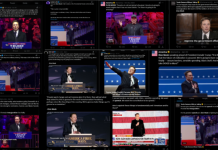Quincy Lee
Science & Tech Editor
Consumer trends reflect the priorities of the population. With purchasing power, people have been electing for healthier items in their diets and on their shelves. One example of this in 2017 is that United States consumers increasingly opt for bottles of water over those sugar-infested soft drinks.
According to the Morbidity and Mortality Weekly Report put out by the Center for Disease Control, Americans’ consumption of single use water bottles has, for the first time, surpassed the consumption of single use soda bottles. Continuous public health announcements have been discouraging excessive sugar intake, and behavior has followed.
This health trend has been steadily gaining ground, while soda companies are struggling to compete. The Beverage Market Corp. released statistics detailing water bottles’ success in the past six years.
“Bottled water accounted for 20.5 percent of the overall U.S. beverage market last year, up from 15.2 percent in 2011,” it stated. “Carbonated soft drinks held a 19.8-percent share, down from 22.7 percent in 2011.”
The decline in soda consumption goes hand in hand with attempts to decline sugar consumption. Due to the large prevalence of obesity and diet related diseases, the American Heart Association recommended that children consume no more than six teaspoons of sugar, or 100 calories, per day. That’s less than the amount of sugar in one soda bottle.
However, this country has a culture of soft drink consumption where animals like polar bears are even represented in Coke commercials as avid soda drinkers. The sweet delight of sugar encapsulated, as these commercials boasted, the phrase “open happiness” to refer to the beverage. In 2000, each American was drinking 53.7 gallons of carbonated soda a year, according to National Geographic. To put that into perspective, each person in the United States was drinking, on average, 11 soda bottles a week.
The sweet taste of sugar brought a bitter aftertaste. “Because of their high amounts of rapidly absorbable carbohydrates, such as various forms of sugar and high-fructose corn syrup (HFCS), sugar-sweetened beverages lead to inflammation, insulin resistance, and impaired ß-cell function,” wrote the Department of Nutrition and Epidemiology at the Harvard School of Public Health
In discussion of this research, experts estimated that even a 20 percent reduction in intake of these sugar-sweetened beverages could save up to $23 billion in health care costs over a 10-year period. With Obamacare a main political point in discussion nowadays, the increase consumption of water bottles could save a substantial amount of federal funding.
In addition to the onslaught of public health announcements discouraging sugar use, city governments, such as the in Berkeley, have levied a soda tax. Known as a “sin tax,” such as those on cigarettes and liquor, the extra cost is aimed at reducing the consumption of a potentially harmful product. Although controversial, this tax is following the trend of decreasing the use of products that impact the population’s health.
Public pressure is pushing the arrow towards a healthier society, with increasing water purchases as opposed to sugary sodas exemplifying this trend. Due to the increased advocacy of health measures, the general population is becoming increasingly educated on the impacts of sugar intakes and choosing water as a substitute. “Water bottle consumption levels increased 8.5 percent last year, the continuation of a years-long trend that also saw carbonated soft drink volume fall by 1.7 percent in 2016,” according to Gary Hemphill, managing director and chief operating officer at Beverage Marketing Corp.
The choices consumers in this country make are their votes for the products they want to see on the shelves. And in 2017, the election results show water bottles as the most popular candidate, running on the platform of increased public health and reduced medical spending.











Food is actually the top source of added sugars in the diets of American children and adolescents, according to a data brief from the Centers for Disease Control and Prevention. To blame soft drinks for obesity is not only incorrect, it’s misleading and counterproductive. When it comes to weight gain, what matters is balancing calories consumed from all foods and beverages with calories burned through activity.
Comments are closed.